Tennis Wheelchair

Are there tennis training camps specifically designed for wheelchair users ?
The article discusses the existence and benefits of tennis training camps designed specifically for wheelchair users. It highlights the unique challenges faced by wheelchair users on the tennis court and emphasizes the need for specialized training programs to address these challenges effectively. The article lists national organizations like the United States Tennis Association (USTA) and the International Tennis Federation (ITF) that offer wheelchair tennis programs and promote the sport worldwide. Additionally, it mentions private organizations such as the Wheelchair Tennis Foundation and Wheelchair Sports Camps that provide training camps and clinics for players of all levels. The benefits of these specialized training camps include skill development, accessibility, community building, and competition opportunities. Overall, the article concludes that attending these camps can help wheelchair users improve their tennis skills, compete at a higher level, and enjoy the sport fully.
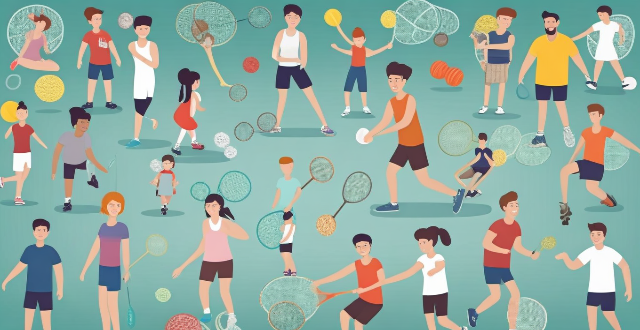
What are some adaptive sports for people with physical disabilities ?
Adaptive sports are modified or specially designed physical activities for people with disabilities, promoting fitness, health, and inclusion. They offer opportunities for competition and social interaction. Popular adaptive sports include wheelchair basketball, racing, and tennis; sitting volleyball; para swimming; track and field events for amputees; goalball; para alpine skiing; and beep baseball for the visually impaired. These sports provide physical benefits and opportunities for personal growth, independence, and social integration.
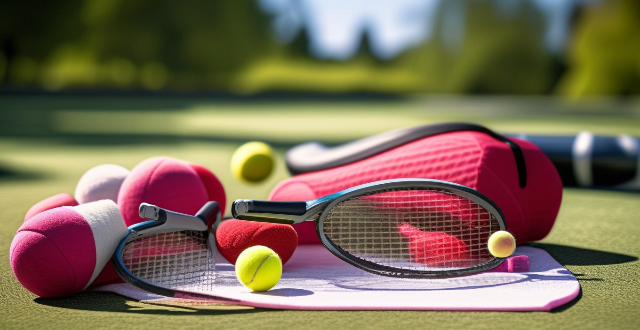
What equipment do I need to bring to a tennis training camp ?
Attending a tennis training camp requires essential tennis gear, protective accessories, and personal items. Pack primary and spare racquets, practice and new balls, athletic clothing, tennis shoes, sun protection, and water bottles. Consider ankle braces, knee supports, and elbow bands for injury prevention. Don't forget casual clothes, toiletries, a backpack, reading material, and devices with chargers for off-court activities. Check with the camp organizers for specific requirements to ensure a complete packing list.

How can I find a tennis training camp near me ?
Finding a tennis training camp near you can be a great way to improve your skills and enjoy the sport. Here are some steps to help you find a suitable camp: 1. Determine Your Location: First, determine the location where you want to attend the camp. This could be your current city or a nearby town. 2. Use Online Search Engines: You can use online search engines like Google to search for tennis training camps in your area. Simply type in "tennis training camp [your location]" and see what results come up. 3. Check with Local Tennis Clubs: Local tennis clubs are often a good source of information about upcoming training camps. Check their websites or contact them directly to ask about any upcoming camps they may be hosting. 4. Contact Professional Tennis Coaches: Professional tennis coaches may also offer training camps or know of other camps in the area. Contact coaches in your area to see if they have any recommendations. 5. Look for Advertisements and Posters: Keep an eye out for advertisements and posters for tennis training camps in your local area. These may be posted at tennis courts, community centers, or other public places. 6. Ask Other Tennis Players: Finally, ask other tennis players in your area if they know of any upcoming training camps. They may have attended one before or heard about one through word-of-mouth. By following these steps, you should be able to find a suitable tennis training camp near you. Good luck!

Can I get a personal coach at a tennis training camp ?
Tennis training camps offer various services, including group lessons, individual lessons, and personalized coaching. Having a personal coach at a tennis training camp can provide you with many benefits, such as personalized attention, customized training plans, accelerated learning, and motivation. To find a suitable coach, research the camp, contact them directly, ask for recommendations, schedule a meeting, and consider the cost. With the right coach, you can take your game to the next level and achieve your tennis goals.
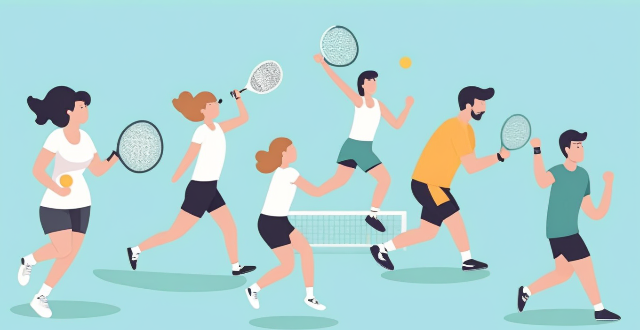
What should I expect from a week-long tennis training camp ?
A week-long tennis training camp is designed to enhance your skills, provide intensive training, and offer opportunities for social interaction. You can expect to see improvements in stroke technique, footwork & movement, strategy & tactics, and physical fitness. The camp will have a structured schedule with morning practices, afternoon matches, and evening reviews. Experienced coaches will provide personalized feedback and motivational support. You will also have the chance to meet fellow tennis enthusiasts and learn from peers. Some camps may include lectures on nutrition and sports psychology, as well as recreational outings. By the end of the camp, you should receive a comprehensive assessment and actionable feedback to continue developing your game. Overall, a tennis training camp offers an immersive experience aimed at refining your skills, gaining confidence, and becoming a more well-rounded tennis player.

Are there any age restrictions for attending a tennis training camp ?
Attending a tennis training camp can have age restrictions based on physical maturity, safety concerns, and skill level. Typically, the minimum age requirement is between 8-10 years old, but some camps may accept younger children with parental supervision or permission. There are usually no maximum age limits, as adult players often attend training camps to improve their skills or prepare for competitions. Attending a tennis training camp can provide numerous benefits, including improved skill level, increased fitness, and networking opportunities.

Can I get a scholarship to attend a prestigious tennis training camp ?
Attending a prestigious tennis training camp can be an excellent opportunity for aspiring athletes to improve their skills and gain exposure to top-level coaching. However, the cost of such camps can be prohibitive for many players. In this article, we will explore whether it is possible to obtain a scholarship to attend a prestigious tennis training camp. Scholarships are financial aid awards that help students pay for college or university tuition fees, books, and other related expenses. They are typically awarded based on academic merit, financial need, or specific talents, such as athletic ability. There are various types of scholarships available, including need-based scholarships, merit-based scholarships, and athletic scholarships. To be eligible for a tennis training camp scholarship, you must demonstrate exceptional athletic ability in tennis. This may include having a high ranking in your age group, winning tournaments, or receiving recognition from coaches or scouts. Most prestigious tennis training camps also require applicants to have a certain level of academic achievement. The first step in applying for a tennis training camp scholarship is to research the available opportunities. This can involve searching online, contacting tennis organizations, or speaking with coaches and mentors in the sport. Once you have identified potential scholarships, you will need to prepare your application materials, which may include transcripts, letters of recommendation, essays or personal statements, and an athletic resume. Obtaining a scholarship to attend a prestigious tennis training camp is certainly possible but requires careful planning and preparation. By understanding the eligibility criteria, researching available scholarships, and preparing a strong application package, you can increase your chances of securing funding for your tennis training goals.

What are the benefits of attending a high-performance tennis training camp ?
Attending a high-performance tennis training camp can significantly improve players' skills and overall performance. These specialized programs offer a range of benefits, including technical skill enhancement, physical conditioning, mental toughness development, exposure to high-level competition, networking opportunities, personalized instruction, and off-court education. With a focus on stroke technique, footwork drills, strategy development, strength and cardiovascular training, flexibility, mental preparation, and stress management, these camps are designed to foster a competitive mindset and prepare players for the rigors of professional tennis. Additionally, the chance to play against strong opponents, receive feedback from experienced coaches, and connect with peers and potential mentors further enhances the value of these camps. Personalized training plans, goal setting workshops, and video analysis also contribute to the comprehensive nature of the training. Beyond physical and technical improvement, camps provide education on nutrition, sports psychology, and equipment knowledge, ensuring that participants are well-equipped both on and off the court. Overall, high-performance tennis training camps offer a holistic approach to tennis development, making them an invaluable resource for players looking to elevate their game.
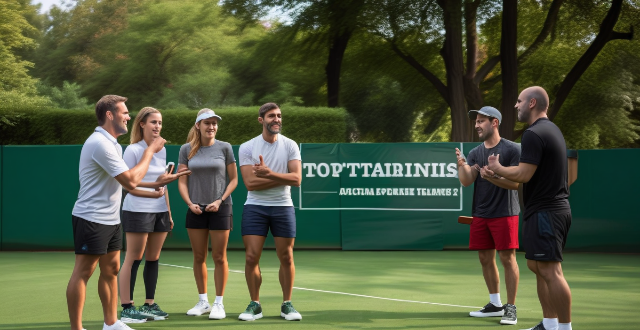
What are the best tennis training camps for beginners ?
This text lists the top tennis training camps for beginners. It mentions 10 different locations in the USA, Australia, Bahamas, France, and England. Each location has its own unique highlights that make it suitable for beginners. The programs offered at these camps range from private lessons to group clinics and focus on building a strong foundation in technique and strategy. The coaching staff at these camps is experienced and dedicated to helping new players improve their skills while enjoying the game.

Do tennis training camps provide accommodation and meals for participants ?
Tennis training camps offer a variety of services, including accommodations and meals. Residential camps typically provide dormitory-style accommodations with shared bathrooms and three meals per day in a cafeteria or dining hall on campus. Non-residential camps do not provide accommodations or meals for participants, so participants must arrange their own lodging and food options.
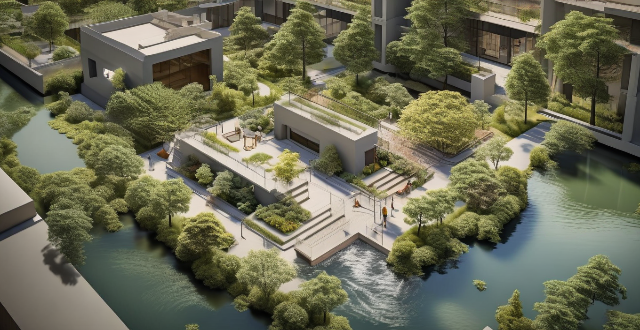
Are tennis training camps effective for children and teenagers ?
Tennis training camps can be an effective way for children and teenagers to improve their skills and develop a love for the sport, depending on factors such as quality of instruction, level of commitment, and overall environment. Benefits include skill development, learning new techniques, building confidence, and socializing with other young players.

Can you recommend any international tennis training camps for advanced players ?
This text provides a list of international tennis training camps for advanced players, including their locations and brief descriptions of the services they offer. The camps are located in various countries such as France, the USA, Spain, the Czech Republic, Germany, the UK, and Australia. Each camp offers specialized training for advanced players, with excellent facilities and experienced coaches to help improve their game.
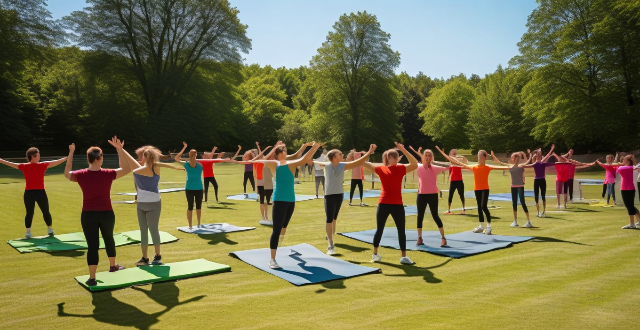
What kind of physical conditioning is included in a tennis training camp program ?
Tennis training camps typically include exercises to improve cardiovascular endurance, strength, agility, and flexibility.

How do I choose a tennis training camp that fits my skill level ?
Choosing a tennis training camp that fits your skill level can significantly improve your game. Here are some tips on how to select the right camp: 1. Assess your current skill level by considering your experience, strengths and weaknesses, and fitness level. 2. Research different camps that offer programs specifically designed for your skill level using online directories, social media groups, and reviews from previous attendees. 3. Check the coaches' qualifications and experience, including their credentials, coaching philosophy, and track record of working with players at your skill level. 4. Consider the quality of the camp's facilities and amenities, such as well-maintained courts, access to equipment, and onsite amenities like locker rooms and dining areas. 5. Evaluate the camp's reputation and success rate by reading reviews, asking for referrals, and contacting the camp directly to learn more about their success stories.
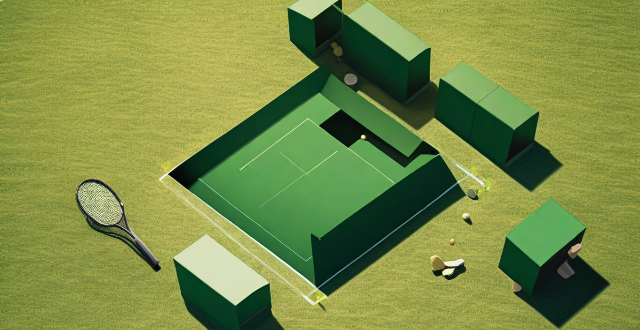
How much does it typically cost to attend a tennis training camp ?
Attending a tennis training camp can significantly vary in cost based on duration, level of instruction, location, and additional services. The main expenses include camp fees, accommodation and meals, transportation, equipment, and optional amenities like private lessons. To manage costs, research different camps, look for early bird discounts, share expenses with a companion, and pack appropriately to avoid extra purchases.
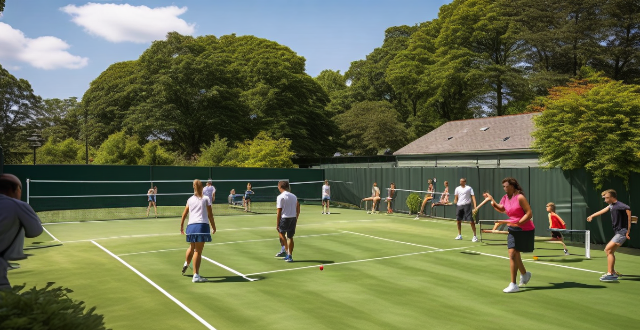
How do I know if a tennis training camp offers quality coaching ?
When considering enrollment in a tennis training camp, it is crucial to assess the quality of coaching by examining credentials and experience of coaches, coach-to-player ratios, training methods and philosophy, reputation and reviews, facilities and support services, and personalized attention and feedback.

What is the daily schedule like at a typical tennis training camp ?
A tennis training camp's daily schedule focuses on skill enhancement, fitness, and mental preparation through activities like morning practice, theory sessions, match play, and fitness training. The day starts early with wake-up calls around 6:00 AM and ends with an early bedtime to ensure rest for the next day's intensive training. Leisure activities are included to promote relaxation and social interaction among participants.
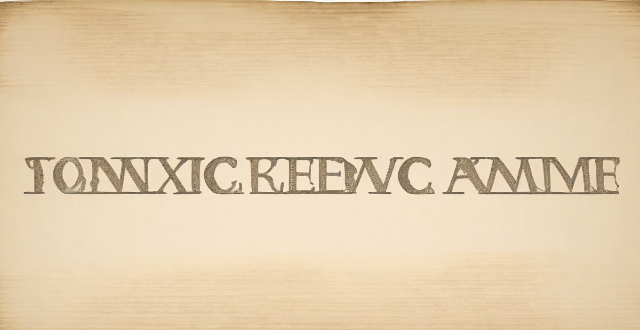
How important is rest and recovery during a tennis training camp ?
The text discusses the significance of rest and recovery in a tennis training camp. It outlines six key reasons why taking time to rest and recover is crucial: preventing overuse injuries, enhancing performance, promoting muscle growth and repair, improving immune function, enhancing learning and adaptation, and maintaining motivation and enjoyment. Incorporating adequate rest periods into the training schedule can ensure that athletes stay healthy, perform better, and derive maximum benefit from the camp experience.
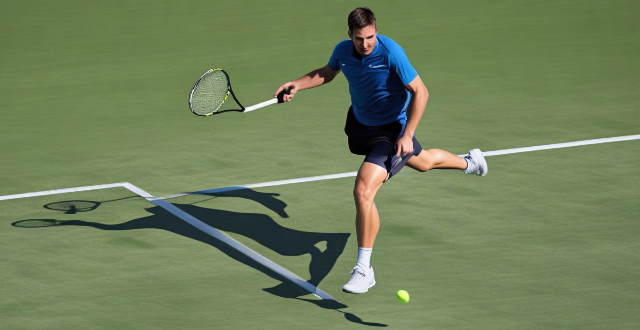
How do I know which tennis racquet is right for me ?
Selecting the perfect tennis racquet can enhance your game and prevent injuries. Consider your skill level, swing type, preferred racquet weight, grip size, string tension, balance, length, feel, vibration dampening, and budget when choosing a racquet that aligns with your playing style, physical capabilities, and preferences. Hands-on testing and personal feel are crucial in finding the right racquet for you.
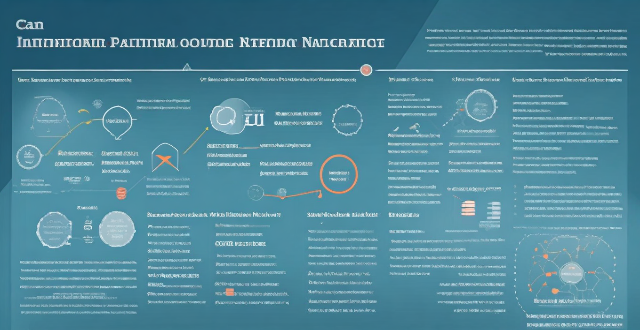
How many hours per day will I be playing tennis at a training camp ?
Attending a tennis training camp can significantly improve your skills and endurance, with daily schedules typically involving 3-6 hours of intensive play. The day is structured around morning technique and strategy sessions, afternoon physical drills, and evening matches or scrimmages to apply learned concepts. Key points include the importance of adequate rest and recovery to avoid burnout and injuries. A typical day might start with a warm-up followed by technical and tactical training, then move to fitness exercises and high-intensity drills, finishing with match play and a cool down. Evening activities may include video analysis and lectures on various topics. Personal commitment levels affect the duration and intensity of training, with beginners starting with shorter sessions and advanced players engaging in more extended, intense workouts. Overall, the camp experience is designed to challenge participants while ensuring a balanced approach to their development.
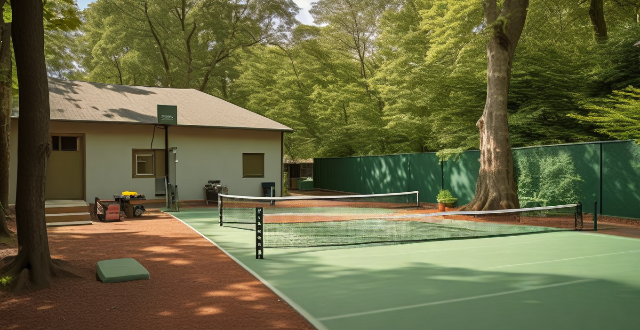
How often should I attend a tennis training camp to improve my game significantly ?
How often you should attend a tennis training camp to improve significantly depends on your current level and experience, goals, quality of training, personal commitments, physical recovery needs, and budget. Finding a balance that works for you is key to maximizing your chances of improvement.

In what ways have advancements in technology facilitated the globalization of sports ?
Globalization of Sports through Technological Advancements Introduction: - Technology has played a crucial role in making sports a universal language, connecting fans and athletes across the globe, and enhancing the overall experience of sporting events. 1. Improved Communication and Connectivity: - Fans can access information about their favorite sports and teams instantly through smartphones, tablets, and laptops. - Social media platforms have revolutionized the way fans interact with each other and their favorite athletes. 2. Advanced Broadcasting Technology: - Live streaming services and high-definition television broadcasts provide an immersive viewing experience for millions of people worldwide. - Virtual reality (VR) and augmented reality (AR) technologies are transforming the way fans experience sports. 3. Enhanced Training Methods: - Data analytics tools enable coaches and trainers to track an athlete's performance metrics and create personalized training programs. - Virtual reality training simulations offer athletes a safe and controlled environment to practice and refine their skills without the risk of injury. 4. Increased Accessibility and Inclusivity: - Technology has played a crucial role in making sports more accessible and inclusive for people with disabilities through advancements in wheelchair design and materials. - The rise of online gaming and esports has created new opportunities for people to participate in competitive activities regardless of their physical abilities or location. Conclusion: - Advancements in technology have transformed the way we experience and participate in sports, making it a global phenomenon that unites people through shared interests and passions.
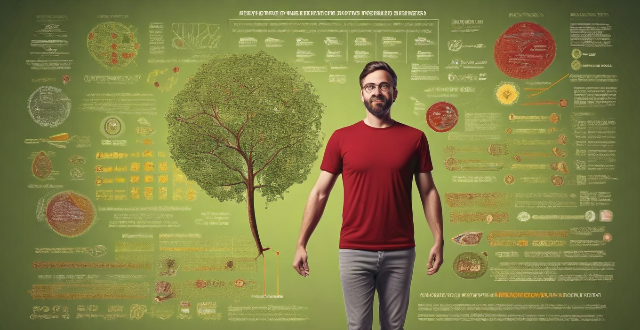
How can people with disabilities incorporate physical activity to improve their mental well-being ?
Physical activity is crucial for everyone's mental well-being, including those with disabilities. Engaging in physical activities can help reduce stress, anxiety, and depression while improving mood, self-esteem, and overall quality of life. Here are some ways people with disabilities can incorporate physical activity into their lives to improve their mental well-being: start slowly and gradually increase intensity; find an appropriate exercise routine; set realistic goals; incorporate mindfulness techniques; seek support from peers and professionals; make it fun!

Are there any specific exercises or drills for skill improvement in basketball/football/tennis, etc. ?
Topic: Skill Improvement Exercises and Drills in Basketball, Football, and Tennis Basketball: - Dribble the ball with alternating hands and in a figure 8 motion to improve ball handling skills. - Practice shooting free throws and spot shooting to enhance accuracy and consistency. - Work on lateral movement and closeout drills to improve defensive positioning and quickness. Football (Soccer): - Pass the ball against a wall and in a triangle formation to improve passing accuracy and touch. - Practice shooting at targets and receiving passes before shooting to enhance shooting accuracy and speed. - Work on marking and tackling drills to improve defensive skills and technique. Tennis: - Hit crosscourt groundstrokes and alternate forehand and backhand shots to improve accuracy and consistency. - Practice serving to targets and focusing on second serves to enhance serving reliability and placement. - Work on lateral movement and net approach drills to improve court coverage and net play.

What are some innovative ideas for improving public transportation accessibility for people with disabilities ?
The text focuses on improving public transportation accessibility for people with disabilities. It suggests several ideas such as low floor buses and trains, tactile paving, audio and visual signals, wheelchair lifts and ramps, braille signage, accessible websites and mobile apps, and training for public transportation staff. The goal is to make it easier and safer for people with disabilities to use public transportation.
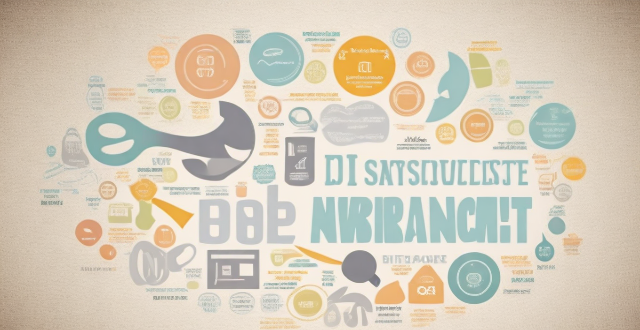
How has technology improved accessibility and participation in sports for people with disabilities ?
The text discusses how technology has positively impacted accessibility and participation in sports for people with disabilities. It covers the development of assistive devices like wheelchairs and prosthetics, sensory aids such as audio description services and tactile signage, communication aids including sign language interpreters and assistive listening systems, and digital platforms that provide live streaming and social media interaction. The article also explores training tools like virtual reality and wearable technology, as well as accessibility features in sports venues. Overall, the text emphasizes how technology is breaking down barriers and promoting equality in sports for individuals with disabilities.
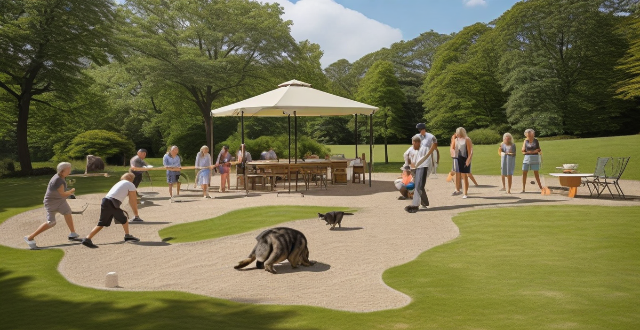
In what ways can retirement communities incorporate physical activities that foster social bonds ?
Retirement communities can foster social bonds among older adults by incorporating a variety of physical activities that cater to different interests and abilities. These include group fitness classes, outdoor adventures, sports and games, mind-body activities, special events, and ensuring accessibility and inclusivity for all residents. By doing so, retirement communities can create an environment where residents maintain their health while developing strong social connections through shared experiences.

What are some examples of successful disability sports organizations or events around the world ?
Disability sports have been gaining popularity and recognition worldwide, with many organizations and events showcasing the talent and determination of athletes with disabilities. Here are some examples of successful disability sports organizations and events around the world: 1. Paralympic Games: An international multi-sport event for athletes with physical and intellectual disabilities, held immediately after the Olympic Games in the same host city. 2. Special Olympics World Games: A global event for athletes with intellectual disabilities, offering competition in various sports such as swimming, athletics, and basketball. 3. International Wheelchair Basketball Federation (IWBF): The governing body for wheelchair basketball worldwide, organizing international competitions and promoting the development of wheelchair basketball across different regions. 4. Cerebral Palsy Football World Cup: A biennial international football tournament for players with cerebral palsy, providing an opportunity for these athletes to showcase their skills and promote awareness about cerebral palsy. 5. International Blind Sports Association (IBSA): Dedicated to promoting sports for visually impaired athletes, organizing world championships and other events in various sports such as goalball, judo, and swimming. 6. World Deaf Volleyball Championships: An international competition for deaf volleyball players, promoting the development of deaf sports and providing a platform for deaf athletes to showcase their talent and compete at the highest level. 7. World Dwarf Games: A multi-sport event specifically designed for individuals with dwarfism, offering a range of sports such as swimming, track and field, and powerlifting, providing opportunities for athletes with dwarfism to compete and showcase their abilities.

What are some examples of successful initiatives that use sports to promote social inclusion ?
This text discusses successful initiatives that use sports to promote social inclusion. It highlights five examples of such initiatives: Street Football World, Homeless World Cup, Wheelchair Basketball Initiatives, Sporting Equals, and Gender Equality in Sports Programs. These initiatives aim to unite people through football, inspire homeless people, promote disability inclusion, challenge discrimination in British Asian communities, and encourage women's participation in various sports, respectively. The activities include global tournaments for marginalized communities, international tournaments for homeless teams, local wheelchair basketball leagues, community cricket events, and women's sports leagues. The impact of these initiatives is significant, with increased public awareness about homelessness, personal transformation stories of participants, improved physical fitness and self-esteem among disabled individuals, reduced instances of racism and discrimination in sport, and higher visibility and recognition of women in sports.